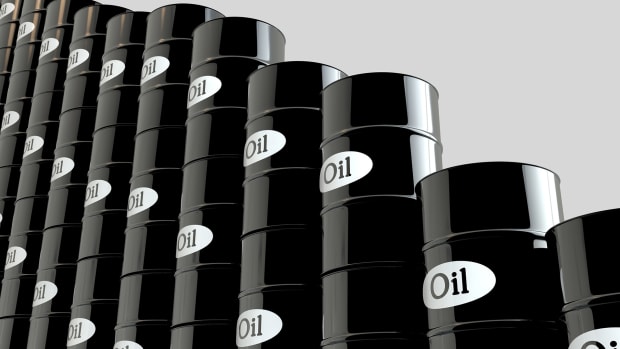President Joe Biden's plan to lower oil prices by releasing some of the oil in the strategic reserve with prices falling, but that short-term fix won't be helping about half of Americans with their heating bills this winter.
U.S. households that primarily use natural gas for space heating will spend an average of $931 this winter (October-March), a 28% ($206) increase from last winter, the IEA said.
About 47% of the country uses natural gas as their primary heating source, according to a 2021 U.S. Census Bureau survey.
U.S. benchmark Henry Hub spot prices are expected to increase 54% from last winter, resulting in higher retail prices and heating bills.
Another 41% of American households use electricity to heat their homes.

Shutterstock
Biden's Fuel Plan
The Biden Administration will announce another release of crude from the Strategic Petroleum Reserve in the coming days, Reuters reported Tuesday, citing sources who said as many as 40 million barrels could be on the market.
It would mark second time this year the President has tapped the reserves after announcing that the U.S. was tapping 14 million barrels.
WTI crude futures, which are tightly-linked to U.S. gasoline, have risen more than 8% since late September, boosted in part by an announcement from OPEC cartel members to cut their collective production rates by around 2 million barrels per day, a move U.S. officials have said was driven by Saudi Arabia's need to mollify the impact of sanctions on the sale of Russian crude.
Saudi Arabia's foreign minister, however, said the U.S. has asked it to postpone the decision by a month, a move that would push the output cuts past next month's mid-term election date on November 8, and stressed that its decisions are made through "non-politicized constructive dialogue" aimed at "protecting the global economy from oil market volatility."
President authorized the release of 180 million barrels from the SPR on March 31, spread over six months, in order to bring down global crude prices and ease the supply hit from Russia's war on Ukraine.
Strategic Petroleum Reserve's History
Established in 1975, Strategic Petroleum Reserve is the world's largest supply of emergency crude oil. The U.S. Strategic Petroleum Reserve, which was created following the Arab oil embargo, has an authorized storage capacity of 714 million barrels.
The last time the reserve was tapped, President Barack Obama directed a sale of 30 million barrels of crude oil in June 2011 to offset the disruption in production due to the Libyan civil war.
Before then, President George W. Bush authorized the sale of 30 million barrels to offset the disruption from Hurricane Katrina. Of the 30 million barrels that were released, of which 9.8 million were loaned out (and returned with interest) and 11 million were sold for a total of 20.8 million barrels used.
The first time the reserve was tapped was back in 1991 when President George H.W. Bush authorized a drawdown of 33.75 million barrels during Operation Desert Storm.
U.S. crude prices actually rose 18.6% from the time Biden first tapped the SPR in late November to the extended spike triggered by Russia's invasion of Ukraine on Feb. 24.







